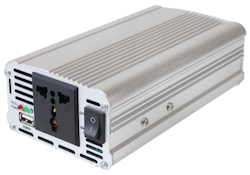In India, the Goods and Services Tax (GST) is a significant reform that streamlined indirect taxation. Businesses engaged in exports often deal with customs and are eligible for a GST Custom Refund. This refund ensures exporters are not burdened by tax costs on goods and services exported out of India, promoting competitive pricing in international markets.
However, navigating the refund process—especially through customs—can be complex without proper knowledge. If you’re an exporter wondering, “How do I get my GST refund from customs?” this guide breaks it down in a simple and step-by-step manner, covering all you need to know.
How Does the GST Refund from Customs Work?
When you export goods from India, GST laws allow you to claim a refund of the Integrated GST (IGST) paid on those exported goods. This is handled either through the Customs Department or through a combination of customs and GST systems.
To become eligible, you must hold a valid GST registration, file the required returns, and follow export procedures through an Electronic Data Interchange (EDI) system integrated with the GST portal and ICEGATE (Indian Customs Electronic Gateway).
Refunds are processed based on the matching of shipping bill details (customs data) with GST returns filed by the exporter, especially GSTR-1 and GSTR-3B.
Advantages of GST Custom Refund
- Improved Cash Flow: Timely refunds ensure exporters have adequate working capital for future transactions.
- Global Competitiveness: With GST refunds, exporters can offer globally competitive prices.
- Avoidance of Double Taxation: Exporters are not taxed twice—once domestically and again internationally.
- Compliance Incentive: Registered exporters with clean compliance records enjoy smoother refunds.
- Faster Processing: With automation and integration of customs with GSTN, processing times are much shorter.
Steps to Get GST Refund from Customs
Here’s a detailed step-by-step process to claim your GST refund from customs:
Step 1: Ensure GST Registration
To claim any GST refund, including custom-related refunds, you must have a valid GST registration. This applies to all types of businesses engaged in export.
Step 2: File GSTR-1 Accurately
- In Table 6A of GSTR-1, enter details of export invoices.
- Ensure details such as invoice number, port code, shipping bill number, and IGST amount are entered correctly.
- These details must match with your customs shipping bill.
Step 3: File GSTR-3B
- Mention the total IGST paid on exports under the relevant column of GSTR-3B.
- The refund processing begins only when GSTR-3B has been filed and the tax paid has been reflected in the system.
Step 4: Shipping Bill as Refund Application
- The shipping bill filed with customs also acts as a refund application.
- When the EGM (Export General Manifest) is filed by the shipping line, the customs system considers the shipping bill for refund processing.
Step 5: Matching of Data
- The system auto-matches GSTR-1 data with the corresponding shipping bill.
- If all details match correctly, the refund process initiates automatically.
Step 6: Refund Processed via ICEGATE
- Once the customs department verifies all data, the refund amount is credited to the bank account linked with ICEGATE and your GST registration.
- No separate application is needed in many cases unless discrepancies occur.
Types of GST Refunds Related to Customs
There are multiple types of GST refunds when it comes to customs:
- Refund of IGST Paid on Export of Goods (With Tax Payment)
- Exporters pay IGST on exports and later claim a refund from customs.
- This is processed automatically once all matching is done.
- Refund under Bond/LUT (Without Tax Payment)
- Exporters can furnish a Letter of Undertaking (LUT) and export without paying IGST.
- In this case, the refund is for Input Tax Credit (ITC) used to manufacture exported goods.
- This refund is claimed through the GST portal, not customs.
- Refund Due to Erroneous IGST Payment on Exempted Goods
- If IGST was wrongly paid on goods that are exempt, you can claim a refund after rectification.
- Supporting documents and explanations are required.
- Refund of Export Duty Paid Mistakenly as GST
- Sometimes, exporters confuse export duty with IGST and overpay.
- The customs department may allow a refund after due process.
Common Mistakes That Delay GST Custom Refund
- Mismatch in Shipping Bill and GSTR-1: If invoice numbers or values don’t match, the refund is withheld.
- Incorrect Port Code or IFSC: Banking and shipping details must be accurate.
- Late Filing: Delay in filing GSTR-1 or GSTR-3B can postpone refund eligibility.
- Pending EGM Filing: Until the shipping line files the Export General Manifest, refund cannot be processed.
- ICEGATE Registration Not Linked with GSTIN: Your ICEGATE credentials and bank details must align with your GST profile.
Conclusion
Getting a GST Custom Refund is a crucial benefit for exporters under the Indian GST regime. It not only enhances liquidity but also strengthens India’s presence in global trade by allowing businesses to operate competitively.
The process, though technical, becomes simple when all documentation and filings are done accurately. Whether you export goods with IGST payment or under LUT, understanding the proper steps ensures that your refund is credited without delay.
For smooth processing, always maintain consistent records across the GST portal and customs system, ensure timely return filings, and link your GSTIN properly with ICEGATE.
Frequently Asked Questions
Q1. Do I need to apply separately for GST Custom Refund?
Answer: No. When you file the shipping bill and GSTR-1 correctly and pay IGST, the shipping bill itself is considered an application for refund. Separate applications are only needed in case of discrepancies or LUT-based exports.
Q2. How long does it take to get the refund?
Answer: Usually, refunds are processed within 7–15 days after the filing of both GSTR-1 and GSTR-3B, provided the EGM has also been filed and no errors exist.
Q3. What is ICEGATE and why is it important?
Answer: ICEGATE is the Indian Customs Electronic Gateway, the online portal used for customs clearance and communication. Exporters must be registered on ICEGATE and ensure their bank account details are updated for the refund to be credited.
Q4. What happens if there is a mismatch in invoice details?
Answer: The system will reject the refund until the mismatch is corrected. You may need to revise your returns or contact the jurisdictional officer to resolve the issue.
Q5. Can I claim refund without GST registration?
Answer: No. GST registration is mandatory for claiming any refund under the GST regime, including those processed through customs.
Q6. Can I export goods without paying IGST?
Answer: Yes. You can export under LUT/Bond without paying IGST and then claim a refund of the unutilized ITC on inputs used for such exports through the GST portal.
Q7. What if my bank account is not linked correctly?
Answer: The refund will not be processed. Ensure your GSTIN and ICEGATE profiles have the same, valid, and updated bank account details.




